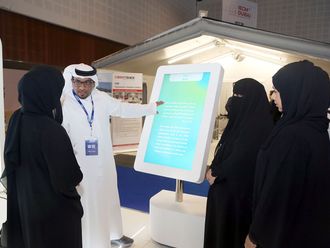UAE residents can still witness part of the Leonid meteor shower from the Tempel-Tuttle comet. It is a rare phenomenon that will not be as dazzling until 2098 or 2131.
"The best place to observe the shower is a mountainous region like Masafi or any high, dry and dust and pollution free area," said astrophysicist Dr Nidhal Guessoum, chair of the Physics Department at the American University of Sharjah.
He said last night was the best because it was the peak shower which started two days ago and will continue for two more days.
"We can still see the shower in the UAE tonight. But, the frequency will be as low as one meteor every 10 to 15 minutes. The meteor shower can be seen only between 2am and sunrise. People have to look in the direction exactly opposite the moon," he added.
Dr Guessoum said the best places to observe the rare show this year were Western Europe and Africa for the first peak and Eastern North America for the second peak.
The Leonids are the result of the passage of the Earth through the path of the debris of the comet Tempel-Tuttle. The meteor is called the Leonid because the meteors appear to be coming from the constellation Leo.
There is evidence that this comet has created meteor showers for more than 1,000 years. Tempel-Tuttle, named after Ernst Tempel and Horace Tuttle who discovered the comet in 1865 and 1866, is about 4km in diameter and orbits the Sun about once 33 years.
As it makes its closest approach to the Sun, it passes close to the Earth's orbit. The closest approach occurred on February 28, 1998.
Meteor shower to be visible in UAE tonight
UAE residents can still witness part of the Leonid meteor shower from the Tempel-Tuttle comet. It is a rare phenomenon that will not be as dazzling until 2098 or 2131.












